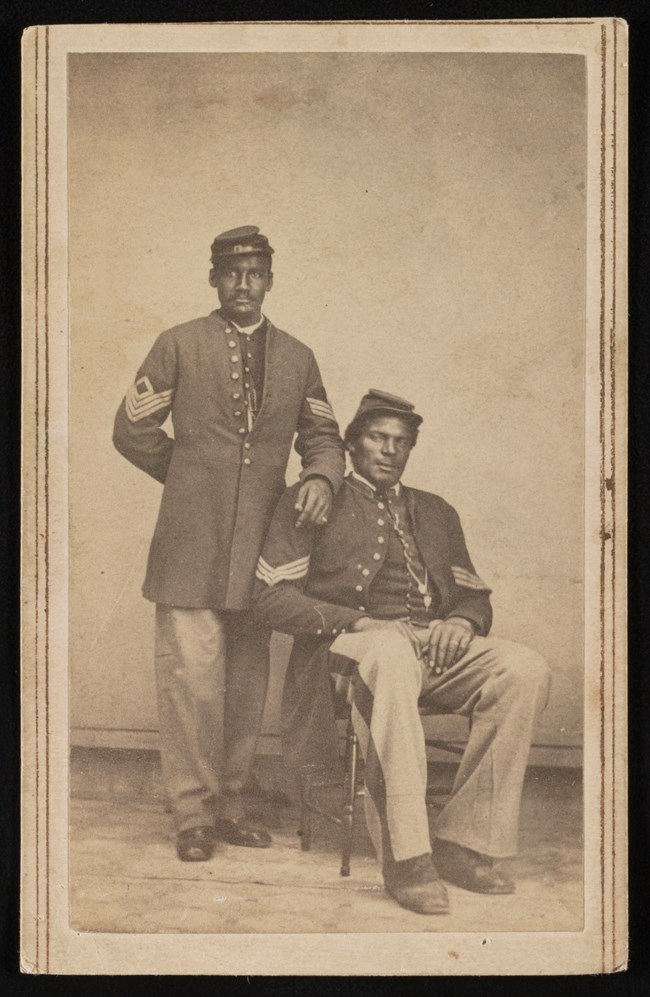Part of a series of articles titled The Port Royal Experiment.
Article
Military Service and the Port Royal Experiment

LOC
In the aftermath of the siege of Fort Pulaski, General David Hunter issued an emancipation proclamation declaring the enslaved people around the Sea Islands to be free. President Lincoln quickly rescinded this order, but Hunter had quietly begun to act.
Based on Hilton Head in early May 1862, Hunter started recruiting a regiment of Black soldiers. “Hunter’s Regiment” as it was known, was comprised of men who had been enslaved across the Sea Islands. The legality of this recruiting effort was questionable, and many of the missionary educators were appalled at the recruiting techniques. The regiment was disbanded, but one company remained together and deployed on St. Simons Island, GA. By the summer the regiment was more formally authorized as the 1st South Carolina Volunteers, and moved their home base to Camp Saxton, in Port Royal, SC.
In the summer and fall of 1862, the 1st South Carolina engaged in combat and raiding operations up and down the coast, recruiting men to join their ranks. Word of the regiment spread, and based on the success of the 1st South Carolina, President Lincoln included a recruiting call for Black men to join the US Army in his Emancipation Proclamation, issued on January 1, 1863. That day the 1st South Carolina Volunteers staged a large Emancipation Day celebration at Camp Saxton with more than 800 men already in its ranks. By the time the Civil War ended, around 180,000 Black men had joined regiments of the United States Colored Troops across the nation.
Military service was an important component of the Port Royal Experiment – although it was often in conflict with the goals of educators, labor reformers, and government officials. For example, the government officials running the plantations were hesitant to lose their best workers to the military. With the advent of wage labor, there was sometimes a financial concern for families who had loved ones join the Army. To fill the labor gap, often younger people became more involved in earning wages, much to the chagrin of the educators. Military service was a family affair, and in the years afterwards both soldiers and their loved ones fought for pensions. These records provide a valuable resource for historians seeking to better understand the Reconstruction era.
As national Reconstruction emerged, Black military service became a core foundation of the arguments in favor of extending citizenship and voting rights to formerly enslaved people.
Once let the Black man put upon his person the brass letters ‘US,’ let him get an eagle on his button and a musket on his shoulder and bullets in his pocket and there is no power on earth that can deny that he earned the right to citizenship in the United States.
Tags
Last updated: March 12, 2025
